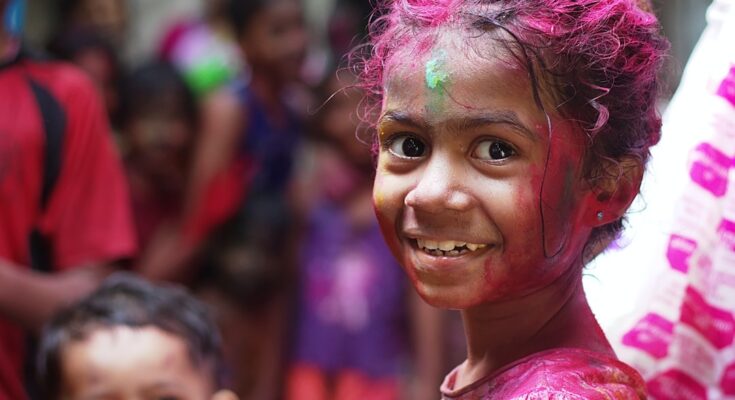India is a country known for its rich cultural heritage and diversity, and this is reflected in its regional music scene. Each region of India has its unique style and sound, making the country’s music scene incredibly diverse. From the lively beats of Bhangra in Punjab to the soulful melodies of Ghazal in Uttar Pradesh, there is something for everyone in India’s regional music.
The development of regional music in India can be attributed to the country’s rich cultural heritage. India has a long history of music and dance, with various forms of music being practiced and passed down through generations. Each region has its own traditional instruments, rhythms, and vocal styles, which have contributed to the development of distinct regional music genres.
The Role of Regional Music in Indian Culture and Society
Regional music plays a significant role in Indian culture and society. It is not just a form of entertainment but also a way to express emotions, celebrate traditions, and convey messages. Many songs and compositions reflect the country’s traditions, values, and social issues.
In addition to being an integral part of everyday life, regional music also plays a crucial role in religious and festive celebrations. Whether it is the devotional songs sung during religious ceremonies or the lively folk songs performed during festivals, music is used to express joy, happiness, and devotion.
The Emergence of Regional Music as a Key Player in Consumer Preferences
In recent years, there has been a shift in consumer preferences when it comes to music in India. Many people are now turning to regional music as their preferred choice over mainstream Bollywood music. This change can be attributed to several factors.
One reason for the growing popularity of regional music is its authenticity and connection to local culture. Regional music often reflects the traditions, language, and lifestyle of a particular region, making it more relatable for people from that area. It provides a sense of identity and pride, which resonates with many listeners.
Another factor contributing to the rise of regional music is the increasing availability and accessibility of music streaming platforms. These platforms have made it easier for people to discover and listen to regional music from different parts of the country. Additionally, social media has played a significant role in promoting regional music and creating a community of fans and artists.
The Impact of Technology on the Accessibility and Popularity of Regional Music
The advent of technology has revolutionized the music industry, making it easier for people to access and discover regional music. Streaming platforms like Spotify, Gaana, and JioSaavn have made it possible for listeners to explore a wide range of regional music from the comfort of their homes.
Social media platforms like YouTube, Instagram, and Facebook have also played a significant role in promoting regional music. Artists can now share their music videos, performances, and behind-the-scenes content with a global audience. This has not only increased the visibility of regional musicians but also allowed them to connect directly with their fans.
The accessibility and popularity of regional music have also been boosted by the availability of affordable smartphones and internet data plans. This has made it possible for people from all walks of life to access and enjoy regional music, regardless of their geographical location or economic background.
Regional Music Genres and Their Unique Characteristics
India’s regional music scene comprises various genres, each with its unique characteristics and style. These genres are deeply rooted in the culture and traditions of their respective regions.
One popular regional music genre is Bhangra, which originated in Punjab. Bhangra is known for its energetic beats, catchy melodies, and vibrant dance moves. It combines traditional Punjabi folk music with modern elements, creating a unique fusion that is loved by people all over the world.
Ghazal is another popular genre that originated in Uttar Pradesh. It is a form of poetry set to music and is known for its soulful melodies and poetic lyrics. Ghazals often explore themes of love, longing, and spirituality, and are performed with great emotion and expression.
Qawwali is a genre of devotional music that originated in the Sufi tradition. It is characterized by its repetitive melodies, rhythmic clapping, and powerful vocals. Qawwali is often performed in religious gatherings and is known for its ability to create a trance-like state in the listeners.
Carnatic music is a classical music tradition that originated in South India. It is known for its complex melodies, intricate rhythms, and improvisation. Carnatic music is performed using traditional instruments like the veena, mridangam, and violin, and is often accompanied by vocalists.
The Evolution of Regional Music in India: From Folk to Fusion
Regional music in India has evolved over the years, with many artists experimenting with fusion music. Fusion music combines elements of traditional and modern music to create a unique sound that appeals to a wider audience.
One example of fusion music is Indipop, which emerged in the 1990s. Indipop combined elements of Indian classical music, folk music, and Western pop to create catchy and upbeat songs. Artists like Alisha Chinai, Baba Sehgal, and Shaan gained popularity during this time with their fusion tracks.
Another example of fusion music is Indi-rock, which combines elements of Indian classical music with rock music. Bands like Indian Ocean and Euphoria have been at the forefront of this genre, creating a unique sound that blends traditional Indian instruments with electric guitars and drums.
The fusion of traditional and modern music has not only expanded the horizons of regional music but also attracted a younger audience who may not have been exposed to traditional forms of music before. It has also opened up opportunities for collaboration between artists from different genres and backgrounds.
The Influence of Regional Music on Bollywood and Popular Music
Regional music has had a significant influence on Bollywood and popular music in India. Many Bollywood songs are inspired by regional music, with composers and singers often incorporating regional elements into their compositions.
Regional folk songs and melodies are often reimagined and adapted for Bollywood films, giving them a wider audience and making them more accessible to the masses. This has helped in preserving and promoting regional music, while also adding a unique flavor to Bollywood soundtracks.
In recent years, there has been a trend of remixing popular regional songs for Bollywood films. These remixes often retain the essence of the original song while adding a modern twist. This has not only introduced regional music to a new generation but also created a sense of nostalgia for older listeners.
The influence of regional music is not limited to Bollywood. Many popular independent artists and bands draw inspiration from regional music and incorporate it into their compositions. This has led to the emergence of a diverse and vibrant indie music scene in India.
Regional Music Festivals and Events: Celebrating India’s Musical Heritage
India’s regional music scene is celebrated through various festivals and events held across the country. These events provide a platform for regional musicians to showcase their talent, connect with their audience, and promote their music.
One such festival is the Sawai Gandharva Bhimsen Mahotsav, held annually in Pune, Maharashtra. This festival celebrates Indian classical music and features performances by renowned classical musicians from all over the country. It attracts music lovers from around the world who come to experience the rich heritage of Indian classical music.
Another popular festival is the Hornbill Festival, held in Nagaland, which showcases the cultural diversity of Northeast India. The festival features performances by traditional folk musicians, rock bands, and contemporary artists, providing a platform for artists from different genres to come together and celebrate their heritage.
These festivals not only promote regional music but also contribute to the cultural exchange and understanding between different regions of India. They provide an opportunity for artists and music enthusiasts to come together, learn from each other, and celebrate the rich musical heritage of the country.
The Challenges and Opportunities for Regional Musicians in India’s Music Industry
Despite the growing popularity of regional music, regional musicians still face several challenges in the Indian music industry. One of the main challenges is the lack of infrastructure and resources. Many regional musicians struggle to find proper recording studios, equipment, and professional guidance to produce and promote their music.
Another challenge is the highly competitive market. With the rise of streaming platforms and social media, there is an abundance of music available to listeners. Standing out in such a crowded market can be difficult for regional musicians, especially those who do not have access to marketing and promotional opportunities.
However, there are also opportunities for regional musicians in the Indian music industry. The growing popularity of regional music has opened up new avenues for collaboration and exposure. Many mainstream artists are now collaborating with regional musicians, which not only helps in promoting regional music but also provides a platform for regional artists to gain recognition on a national level.
Additionally, the rise of independent music labels and platforms has provided regional musicians with alternative avenues to release and promote their music. These platforms focus on promoting independent artists and provide them with the resources and support they need to succeed in the industry.
The Future of India’s Regional Music Scene and Its Global Appeal
India’s regional music scene has a bright future ahead. With its rich cultural heritage, diverse genres, and talented musicians, it continues to captivate audiences both within the country and around the world.
The global appeal of regional music is on the rise, with many international artists collaborating with Indian musicians to create unique and diverse compositions. This cross-cultural exchange not only enriches the music but also promotes cultural understanding and appreciation.
As technology continues to advance and music becomes more accessible, the regional music scene in India is expected to grow even further. With the support of streaming platforms, social media, and independent music labels, regional musicians have more opportunities than ever before to showcase their talent and reach a global audience.
India’s regional music scene is a testament to the country’s rich cultural heritage and diversity. It is a celebration of the unique traditions, languages, and rhythms that make India such a vibrant and dynamic country. Whether it is the foot-tapping beats of Bhangra or the soul-stirring melodies of Ghazal, regional music in India will continue to captivate listeners and inspire generations to come.
Check out this article on India’s Regional Music Scene: A Major Consumer Preference. It explores the diverse and vibrant music landscape of India, highlighting the popularity of regional music genres among Indian listeners. From Punjabi Bhangra to Tamil film music, regional music has a strong following and plays a significant role in shaping the country’s music industry. Discover how these regional sounds have become a major consumer preference in India. Read more



